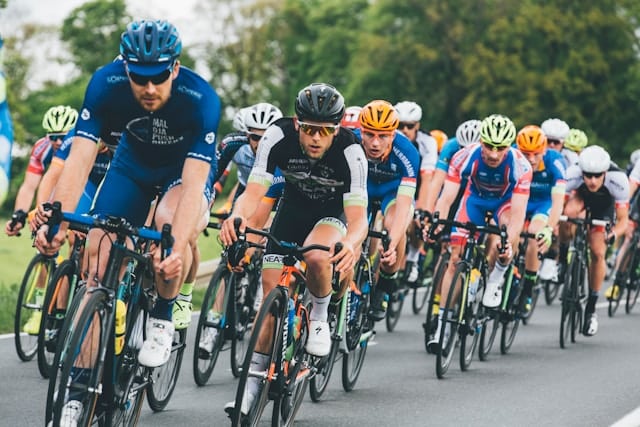Understanding how the body uses glucose is fundamental to debunking the mysteries of human performance, particularly in endurance sports such as cycling. Continuous glucose monitoring (CGM) is a technology that offers real-time insights into the body’s glucose levels, thus providing a profound understanding of how the body manages energy during various physical activities. But what does this mean for cyclists and other endurance athletes? Let’s delve deeper and find out.
The Role of Glucose in Endurance Sports
Before we can comprehend the impact of CGM on cyclists, it’s vital first to grasp the role of glucose in endurance sports. Glucose, a simple sugar, is the principal energy source for the human body. It powers everything from your brain function to your muscle contractions. For athletes, particularly endurance athletes such as cyclists, maintaining optimal glucose levels is critical to ensure sustained performance over long periods.
Also to discover : How Can Golfers Adjust Their Swing Mechanics for Windy Conditions on the Course?
In endurance sports, where athletes are required to maintain a high level of intensity for extended periods, the body’s energy supply primarily comes from carbohydrates, which are broken down into glucose. This glucose is then transported to the muscles, where it is used to produce energy. However, the body’s capacity to store glucose is limited. As a result, athletes must carefully manage their glucose intake and usage to prevent depletion, which can lead to decreased performance and fatigue.
The Importance of Continuous Glucose Monitoring (CGM)
CGM devices enable athletes to track their glucose levels in real-time, thus providing valuable data that can be used to optimize their nutrition and training strategies. Unlike traditional methods of glucose monitoring, which require intermittent blood tests, CGM systems use a small sensor inserted under the skin to measure glucose levels in the interstitial fluid (the fluid between body cells). The sensor then sends the data to a device, typically a smartphone or a dedicated reader, where it can be viewed and analyzed.
Additional reading : What Are the Psychological Training Methods for Overcoming Fear in High-Divers?
Continuous monitoring allows athletes to see how their glucose levels respond to different factors, including dietary intake, exercise intensity, duration, and type, stress, and sleep. This information can help them understand their body’s unique patterns and responses, leading to more precise and personalized training and nutrition strategies. For instance, an athlete may find that their glucose levels dip too low during long training sessions. They can then adjust their carbohydrate intake before and during exercise to prevent this from happening.
How Continuous Glucose Monitoring (CGM) Benefits Cyclists
For cyclists, the benefits of CGM are manifold. By providing continuous data on their glucose levels, cyclists can make informed decisions about their nutrition and training, thereby optimizing their performance and recovery. For instance, a cyclist can adjust their carbohydrate intake during a long ride if they see their glucose levels dropping, thus preventing a potential energy crash. Moreover, by monitoring their glucose levels, cyclists can identify patterns and trends, such as how their body responds to different types of food or training, which can help them fine-tune their strategies.
Beyond performance optimization, CGM can also provide valuable insights for cyclists with diabetes. Managing glucose levels can be particularly challenging for people with diabetes, who must balance their insulin intake with their carbohydrate consumption and physical activity. By providing real-time glucose data, CGM can help diabetic cyclists manage their condition more effectively and safely participate in their sport.
Scholarly Evidence on CGM and Endurance Performance
Scientific studies support the benefits of CGM for endurance athletes. A study published in the journal Diabetes Care (DOI: 10.2337/dc16-1522), which looked at the effects of CGM on glycemic control in type 1 diabetic athletes, found that using CGM improved the athletes’ glycemic control and reduced hypoglycemic episodes during exercise. Similarly, a review article published in Sports Medicine (DOI: 10.1007/s40279-019-01224-3) reported that CGM provides valuable data that can help athletes optimize their carbohydrate intake during exercise, thereby enhancing performance.
In a study available on PubMed (PMID: 30602499), researchers found that CGM could reliably detect changes in glucose levels during exercise in non-diabetic athletes. The study suggested that CGM could be a valuable tool for athletes to optimize their dietary strategies and monitor their physiological responses during training and competition.
Another PubMed study (PMID: 30951468) examined the use of CGM in professional cyclists during a multi-stage cycling race. The study found that CGM provided valuable insights into the cyclists’ glucose management strategies, including their carbohydrate intake and insulin administration. The authors concluded that CGM could be a useful tool for managing glucose levels during prolonged endurance events.
Without a doubt, the advent of CGM technology has opened up new ways for endurance athletes to understand and manage their energy supply during training and competition. By providing continuous, real-time data on glucose levels, CGM enables athletes, particularly cyclists, to optimize their nutrition and training strategies, thereby enhancing their performance and health.
Continuous Glucose Monitoring (CGM) and Training Adaptation
Another significant benefit of continuous glucose monitoring (CGM) is its potential to aid in training adaptation. Training adaptation refers to how the body changes and improves in response to physical activity. This can include increased aerobic capacity, improved strength, or better efficiency in utilizing energy sources. CGM provides an in-depth view of how the body’s glucose levels respond to different types of training, thereby helping athletes adjust their training regimens accordingly.
For example, a cyclist may notice that certain types of high-intensity training cause significant spikes in blood sugar levels, indicating a high rate of glucose usage. This might lead the athlete to incorporate more low-intensity, steady-state training into their regimen, which is known to enhance the body’s ability to utilize fat as an energy source. This can help spare glucose, preserving it for periods of higher intensity.
On the other hand, if a cyclist observes that their glucose concentration remains low even during intense workouts, it could suggest that their body is more efficient at using other forms of energy, such as fat or protein. In such cases, the athlete might choose to focus more on strength or power training, which can help increase muscle glycogen stores and thus improve glucose availability during exercise.
In this way, CGM devices, through providing continuous, real-time glucose data, can help cyclists better understand their unique physiological responses to training. This insight can, in turn, guide their training adaptation, optimizing their energy expenditure and enhancing their endurance performance.
Conclusion: The Future of Endurance Performance
The advent of Continuous Glucose Monitoring (CGM) has undoubtedly revolutionized our understanding of the role of glucose in endurance performance. By providing real-time, continuous data on interstitial glucose levels, CGM devices have given endurance athletes, particularly cyclists, unparalleled insights into their body’s energy dynamics.
The benefits of CGM for cyclists extend beyond merely optimizing CHO intake during exercise. Real-time glucose monitoring can aid in fine-tuning training regimens, managing type diabetes in athletes, and understanding the body’s unique energy expenditure patterns. Scholarly evidence from reputable sources like Google Scholar and PubMed Crossref further supports the efficacy of CGM in improving glycemic control and enhancing performance in endurance athletes.
However, it’s important to remember that while CGM is a powerful tool, it’s not a standalone solution. It must be used in conjunction with a well-rounded approach that includes a balanced diet, proper training, adequate recovery, and regular medical check-ups.
As technology continues to evolve, it’s exciting to envision how advancements in CGM and other health-monitoring devices might further transform endurance sports. Perhaps in the future, real-time monitoring could extend beyond glucose to include other key physiological parameters, such as heart rate, oxygen levels, and even hormone concentrations. Such advancements could provide an even more comprehensive picture of an athlete’s physiological state, thereby enabling even more personalized and effective training and nutrition strategies.
In conclusion, Continuous Glucose Monitoring (CGM) represents a significant leap forward in our ability to understand and enhance endurance performance. And as technology continues to advance, the possibilities for further innovation are truly limitless.






